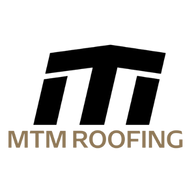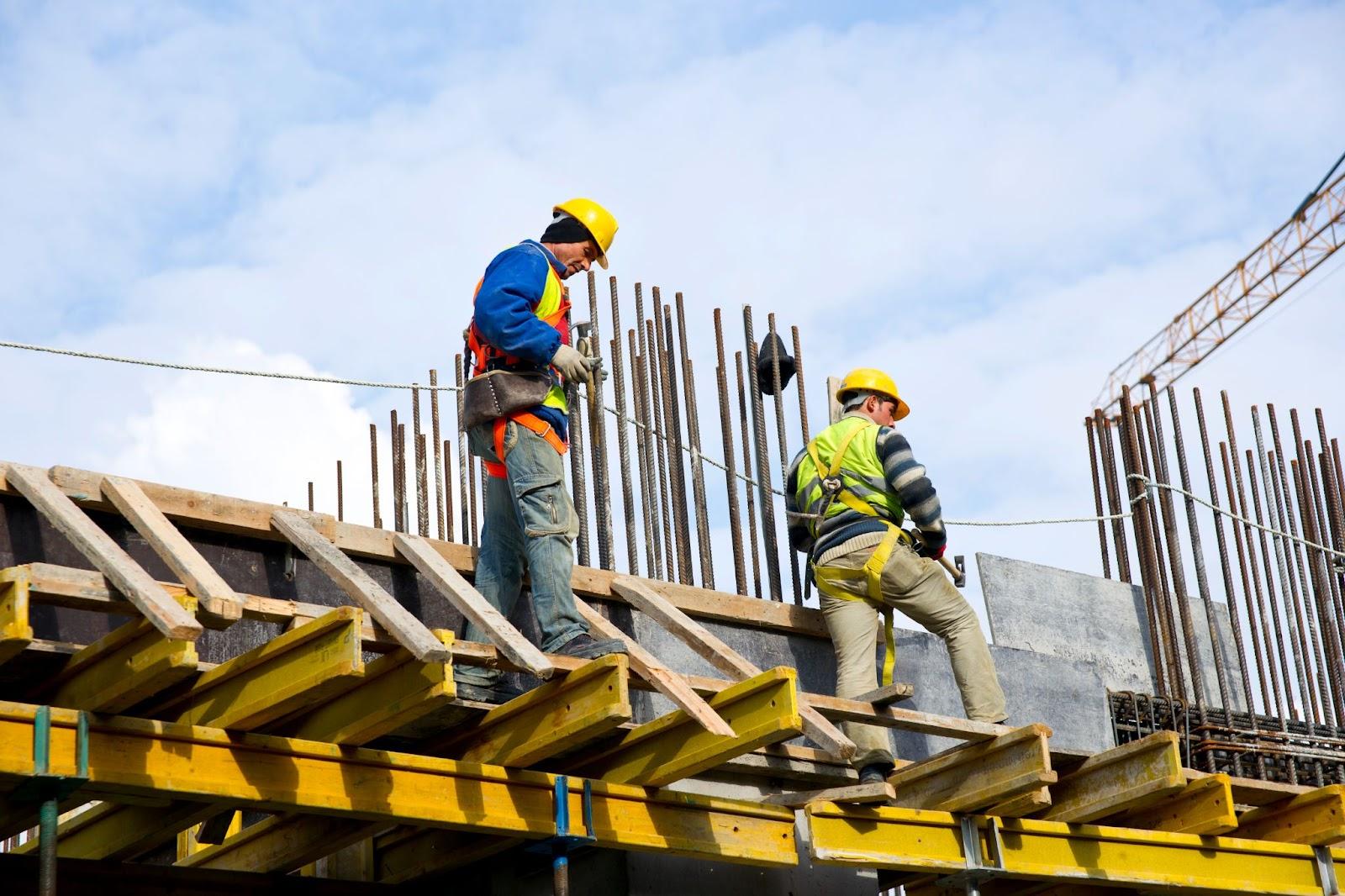Roof safety is a set of preventative and safety measures used when working on or repairing rooftops. To minimize human injury and structural damage, roof safety should be observed while on the job.
Roof work exposes workers to hazards like falls, which are the biggest cause of mortality in the construction business. According to the Occupational Safety and Health Administration, falls from roofs account for 34% of all fall fatalities.
Having said that, roofers everywhere should prioritize safety. Here are some suggestions on roof safety systems and tips to keep your staff safe.
Top 8 Roof Safety Systems
So, what roof safety features should you put in place to provide safe access to existing and new buildings?
1. Anchor Points
When working at extreme heights, roof anchor points allow your crew to tie themselves to a stable position on the roof. Roof anchor systems are compatible with various roofing materials, including roof tiles, metal, and concrete. Employees can operate freely without fear of falling and with a wide range of mobility when linked to the roof.
2. Safe Rail Barriers
Safe rail barriers along the margins of the roof are a passive roof safety measure that potentially saves many workers’ lives. Rail barriers come in a variety of styles, from parapet barriers to freestanding ones. A simple barrier holds people back from the edge, where they could easily fall.
3. Ladder Systems
Ladders are a necessary component of any roof safety system. How else do you go up and down the roof? However, poor ladder use might expose your team to more danger and damage. Ensure that your site is using a high-quality ladder and that your personnel are appropriately educated on ladder safety.
4. Overhead Rails
Overhead rail systems allow your workers to move machinery and equipment at height freely and safely, with no fear of falling, injuring themselves, or causing harm to others. With many applications, overhead rails provide a quick and risk-free safety solution for everyone to utilize. Furthermore, overhead rails allow you to reach more difficult areas without taking needless risks.
5. Fall Protection Systems
In the worst-case scenario, if someone falls from the roof, fall arrest systems are required for adequate safety. By minimizing falls, effective fall arrest devices avoid serious injury or death. Cables, ladder ties, static line systems, guard rails, grab rails, and harnesses are all required components of a fall prevention system.
6. Pathways and Walkways
Roofs are not designed for walking on and often have uneven floors. Putting up suitable pathways with non-slip surfaces and railings. Walkways and pathways help ensure that everyone can move around safely while high up on a building. They also allow for quick and secure access to roof safety equipment.
7. Safety Audits, Protection, and Reporting
Audits, frequent inspections, and providing reports on your safety precautions are the most effective ways to guarantee that all of your processes are working as efficiently as possible. Ensure that all of your workers and crew understand and follow safety rules, and that you have a mechanism in place to protect and report any who violate safety requirements.
Furthermore, frequent inspections will ascertain if you are wearing faulty or damaged roofing safety gear before it endangers someone.
8. Roof Access Hatches
Roof safety hatches are a secure way to provide internal roof access to the building’s top. Access hatches are very useful in long-term projects and new buildings. Access systems can, however, be installed in existing structures.
11 Roof Safety Tips and Precautions
1. Do not consume alcohol and climb a roof
You’d be shocked at how many individuals believe it’s OK to drink alcohol and climb a roof. Simply put, this is a disaster waiting to happen. This applies to both commercial and residential roof safety.
Before going onto a roof, be sure you are completely unimpaired. Any distractions or impairment can lead to mistakes that cause you to fall off the roof. These kinds of errors are easily avoidable, yet they frequently occur as a result of negligence and a generally carefree attitude.
2. Avoid operating in windy and wet conditions
Wet leaves and moisture on a roof can cause loss of footing and severe slippages. This is exceedingly risky and ought to be avoided as much as possible. Similarly, a strong blast of wind can make working conditions dangerous and difficult.
3. Dress appropriately
For safe roof work, mobility and flexibility are essential. That is why it is critical to wear clothes that are not constricting but also do not hang off of you. To be safe, you must be able to respond and move about effectively.
For example, avoid wearing garments that are too baggy or long, as these may impede your movement.
Also, avoid wearing garments with rips or tears. This just increases the risk of snagging on the roof, which can lead to injuries. Wearing appropriate clothing is the easiest of all roofing safety tips to follow.
4. Use a harness
A safety harness for roof workers is a critical component of a complete personal fall arrest system. The harness, roof anchor, rope, rope-grab, and lanyard are all included. Select the best harness and system for your task site. Work situations vary, and harnesses do not come in “one size fits all.”
Rooftop Safety Pro Tip: Consider the height of the structure you are working on. Based on the height of the building, retractable lanyards may be required instead of set lengths.
5. Protect your head
Headwear is one obvious protective strategy. Having a helmet may seem like a no-brainer, but you’d be surprised how many contractors don’t wear one.
Slips and falls are an unavoidable occurrence. It is critical to ensure that you are adequately covered in the case of an accident. Before you go up to the roof, put on a helmet. Hopefully, you will not require it, but it can save your life.
6. Your workplace should have prominent signage
People in the vicinity of the work area should be made aware of the presence of roofing work by visible signs. This can prevent harm or accidents involving on-site workers, people passing by, or falling debris.
7. Don’t use low-cost ladders
One of the most prevalent causes of rooftop accidents is that the ladder is low-quality or has reached the end of its useful life and should not be utilized.
Consider this: That ladder might mean the difference between securely climbing the roof and crashing down and injuring yourself. Why would you take the chance?
While it is clear that cost is an issue, safety should take precedence. Invest in a good ladder that isn’t creaky and unsteady. Purchase a sturdy ladder that will provide you with substantial support. Discard ladders that have too much wear and tear.
8. Maintain a clear work area and take note of any hazards
Make sure the work space is clean, well-organized, and well-protected from passersby. Make a mental note of any potentially hazardous areas on the job site, both on the roof and on the ground, such as electrical lines, risky access points, skylights, or any region on the roof that seems damaged.
You must also avoid working on a roof during severe weather. Rain, sleet, and snow increase the danger of potential falls, while excessive temperatures can induce heat exhaustion, stroke, and equipment damage.
9. Set up and climb with caution
The Occupational Safety and Health Administration of the United States Department of Labor has a comprehensive collection of ladder safety standards. These fundamentals are very crucial to remember:
- Always keep three points of contact on the ladder
- Ensure that every extension ladder lock is in place
- A ladder’s base should be placed a fourth of its working length away from the wall
Rooftop Safety Pro Tip: Use fiberglass or wood ladders around electrical cables rather than metal ladders.
10. Policies and procedures must be followed
Implementing safety process rules for your business is one way to minimize the accidents that can contribute to regular rooftop mishaps. Make following best practices mandatory and penalize those who don’t follow the rules.
Employees may not like it, but it will shield them and you from legal liability. More significantly, it encourages safe practices. Even though some workers may not always want to adhere to every rule, they should be enforced on every job to ensure that all employees remain safe.
11. Create pathways for walkways
If possible, walking pathways can be readily welded to an existing roof. This gives those who must climb the roof a level and safer platform. And, at the end of the day, anyone who needs to go up on the roof should prioritize that.
These pathways should be a must for any roofing contractor because they are easy to install. It’s just another safety measure that can be applied to safeguard both yourself and your employees from tragedy.
Endnote
Skipping critical safety precautions increases the likelihood of an accident occurring, resulting in higher costs, potential legal liability, and delaying your project deadline. Roofing is a dangerous occupation, but you can reduce your risk by following these safety precautions.
By adhering to a roof safety system, you can significantly lessen the risks to your business and your workers. The challenge is to put in place the proper safeguards and ensure that all parties do their part to follow them.
Do you have any residential or commercial roofs that need repair or maintenance services in Utah or Arizona? Contact MTM Roofing for a complimentary, no-pressure, professional estimate today!






